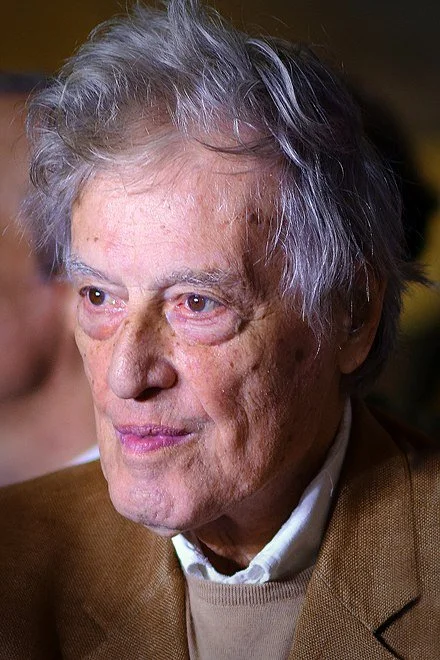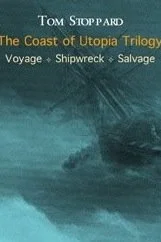How Much Synthesizing Can One Ask of an Audience? Reflections on Master Playwright Tom Stoppard
I have long admired playwright, Tom Stoppard. He exhibits synthesizing genius in the arts. In an earlier blog, I have speculated about how he brings together a broad swath of words, ideas, ideas, characters, and scenarios in seemingly seamless fashion (link here).
In mid-September 2022, my wife Ellen and I ventured to New York City for the first time since the start of the pandemic. We took the risk of contracting COVID in order to see Stoppard’s latest and possibly final play, Leopoldstadt, (the playwright is 85 years old).
Both Ellen and I are the offspring of European Jews who narrowly escaped Europe at the start of World War II. We anticipated that Leopoldstadt—a thinly veiled autobiographical play about Stoppard’s own European Jewish family—would be meaningful for us; and, indeed, the theatrical experience was powerful.
An unexpected bonus. With luck and good timing, after the play was over, Ellen and I had the chance to meet and briefly speak with Stoppard. As mentioned in my earlier blog, this was my second unplanned meeting with an artist whom I so admire.
Ellen and I were well prepared to view a play about Vienna between 1899 (the height of the assimilation of Jews) and 1955 (a decade after the end of the Holocaust). I had read the play, summarized it for Ellen, and shared a list of the nearly 40 characters. I had also read some reviews of the London production two years ago as well as recent interviews of the playwright. Ellen and I were both able to follow the play and highly treasured our whole experience.
But in scanning reviews both in the US and the UK, I noticed a clear division. Many viewers and reviewers give the play a high grade; but a good many others feel that it’s overwhelming— too many characters, too hard to follow the various plots and subplots, and too many different messages in the scenes—a few of them very brief.
There’s much to be said for staging all five acts without a break. There’s also an argument for breaking it up into two segments (as happened in the London production)—or as I will suggest, maybe even the creation of two distinct plays. But however it is staged, the problem remains—the play is difficult to follow even if one has considerable background knowledge.
In considering what constitutes an effective synthesis, it’s advisable to reflect on what’s adequate, what’s insufficient, and what’s overwhelming. To aid such reflection, I will draw on two very well-known Stoppard creations.
On the one hand, there is Travesties—arguably my favorite Stoppard work. Set in Zürich during World War I, the play features well-known personalities: revolutionary leader V. I. Lenin, writer James Joyce, Dada artist Tristan Tzara; and it has a central conceit—the efforts by impresario Henry Carr to stage a Swiss production of Oscar Wilde’s well known comical farce “The Importance of Being Earnest.”
In my judgment, any reasonably dedicated theatergoer can get the gist of Travesties without prior reading of the text and without researching background material—one does not have to be a sophisticated connoisseur. To be sure, as is the case with all Stoppard’s plays, Travesties gains from revisits, re-reading, reviewing, and re-reviewing—as I have done a few times.
A sharply contrasting case: The Coast of Utopia. This is a clutch of three plays which are usually seen on three different occasions—though it is possible to go to a nine-hour binge of the three plays (as with Wagner’s Ring cycle staged in Bayreuth, there are breaks for meals and bathroom visits). Set in the middle of the 19th century, the trio of plays portrays a number of famous and not-so-famous Russian intellectuals and artists who have left czarist Russia—sometimes in order to save their lives! These surviving personages attempt to pursue their political and artistic endeavors from the relative safety of France, Germany, and London (the latter deemed the safest site and the one clearly valorized by the playwright).
In his own reflections on The Coast of Utopia, Stoppard mentions his debt to the writings of historian of ideas Isaiah Berlin and to E. H. Carr, a historian of Russia and the Soviet Union. The playwright evidently draws as well on the writings and biographies of a dozen Russian personalities, including Alexander Herzen, Ivan Turgenev, and Mikhail Bakunin, (these are the names I knew beforehand, though to be frank, JUST the names).
There are also cameo appearances by German revolutionary thinker Karl Marx and his Italian counterpart, Giuseppe Mazzini. Of course, in Stoppardian fashion, the play also features, foregrounds, or presents cameos of a variety of interesting though less well-known personalities—parents, children, lovers, servants, authority figures, etc. As in an Oscar Wilde farce (or for that matter, some Shakespeare comedies), their personalities, remarks, and actions can be appreciated even if one does not know—or even care—about what was happening in the heart of Europe 150 years ago.
Nonetheless, as someone who wishes to understand the artist’s achievement, it’s clear that I would have to do a lot of research to appreciate fully Stoppard‘s dramatic accomplishment—despite Stoppard’s feeling that this is not unnecessary. “Viewers don’t have to read a dozen books to appreciate The Coast of Utopia,” he has contended. “What kind of madman would write a play that requires the audience to read a dozen books in advance? “ (Lee, p. 662)
Back to Leopoldstadt. As in Travesties, there is a central theme—the tragic fate of an assimilated Austrian Jewish family over a half-century. One can assume that almost everybody who elects to see the play knows that much. In that sense, Leopoldstadt can be compared to Travesties—which is ostensibly a play about staging the farce—though, of course, it’s about so much more.
Nonetheless, there are all kinds of political, artistic, cultural, religious, and personality themes—and quirks—in Leopoldstadt. Contrary to Stoppard’s protest, these can only be appreciated if one has read a book—or at least is familiar—with the themes of Carl Schorske Fin de Siecle Vienna or Stephen Toulmin’s Wittgenstein’s Vienna. And it helps as well if one has a knowledge of Judaism, Kristallnacht, and European politics from the end of the 19th century to the middle of the 20th century.
Of course, one can watch a play like Leopoldstadt or the three acts of The Coast of Utopia—and subsequently do one’s homework. I suspect some of us would do just that and then see the play again—or less often, re-read the script as I have done. And of course, if one has done one’s homework, (or play work!) one gains more out of seeing any re- serious dramatic performance whether it is by William Shakespeare or George Bernard Shaw, or by Tennessee Williams or August Wilson.
Still, I believe that in the most successful plays, the plot and literary strengths emerge on an initial single exposure rather than single viewings that leave a sizable proportion of the audience somewhere bewildered by what’s happening on the stage for most of the two or three hours.
I have no doubt that Tom Stoppard is one of our great playwrights. He has a special genius—a synthesizing genius—for packing an enormous amount of information, wit, character development, and historical and cultural analysis into a few hours on the stage. I believe equally that several of his plays will still be staged and continue to be analyzed many decades from now. But my guess is that the ones that reveal the most of their power in initial viewing —where their synthesis can essentially be grasped—are the ones most likely to survive with a theatrical public. The most demanding ones, like A Coast of Utopia—will be revisited primarily by historians and critics of the theater. Where the line is drawn will be an individual decision—much less conscious than the way I’ve outlined it here.
Reference
Lee, H. (2022). Tom Stoppard: A life. Knopf.
For comments on an earlier draft, I thank Shinri Furuzawa and Ellen Winner



